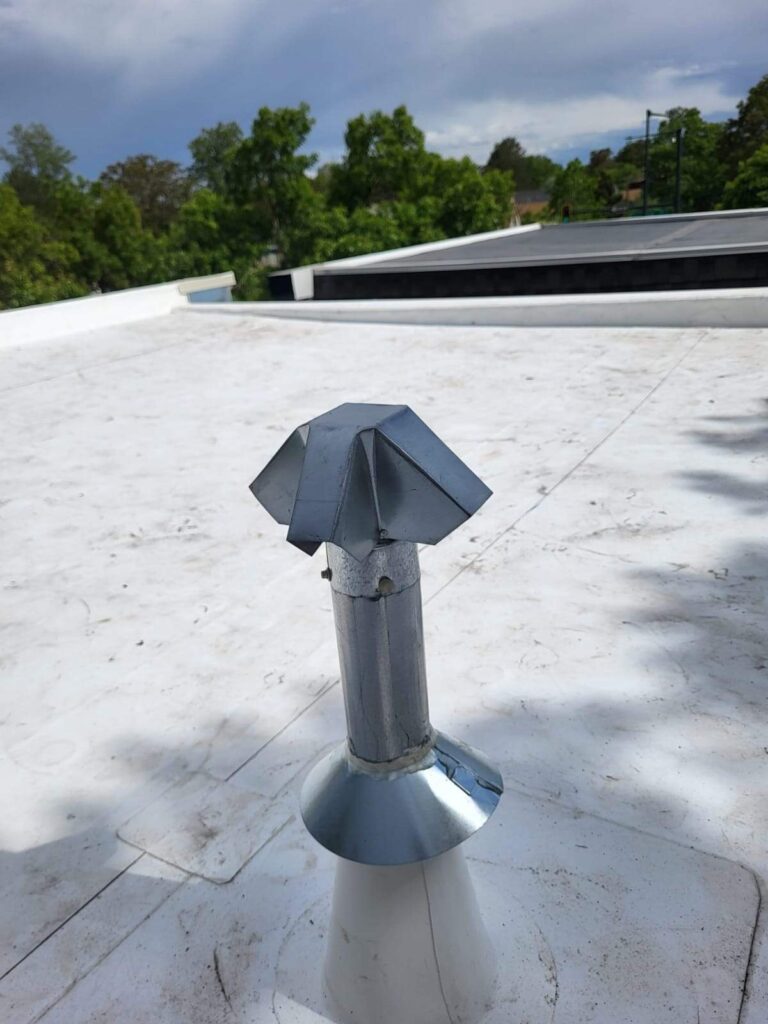
Apartment building roofs are designed not only to shield occupants from the elements but also to handle added weight from HVAC units, solar panels, and other systems. The choice of roofing material greatly affects durability, cost-efficiency, and maintenance needs. While most apartment buildings feature flat or low-slope roofs, the materials used can vary widely depending on budget, climate, and long-term goals.
Asphalt Shingles for Apartment Buildings
Asphalt shingles remain among the most commonly chosen roofing materials for apartment buildings. They are cost-effective, versatile in design, and available in a wide range of colors. On average, they last 20 to 25 years, making them a suitable option for budget-conscious projects. However, they require regular upkeep and tend to deteriorate faster under harsh weather, which means eventual replacement is inevitable. For property managers prioritizing affordability, asphalt shingles remain a practical choice.
Metal Roofing for Long-Term Durability
Metal roofing is a premium option that offers 50 years or more of reliable service. It withstands extreme weather, resists fire, and reflects sunlight, which helps reduce cooling expenses during hot summers. While the upfront cost is higher, the reduced need for repairs and replacements makes metal a cost-effective long-term solution. This option is particularly beneficial in areas prone to storms or heavy snow.
Built-Up Roofing (BUR) for Flat Surfaces
Built-Up Roofing, commonly known as BUR, has been used for over a century on flat apartment roofs. Composed of alternating layers of bitumen and reinforcing fabrics, BUR creates a durable and waterproof surface. It typically lasts 15 to 20 years and is one of the more affordable options for multi-family structures. BUR also provides strong insulation benefits, helping to regulate building temperatures.
EPDM Rubber Roofing
EPDM rubber roofing is a synthetic material best suited for flat or low-slope designs. Known for its exceptional durability, it can last 30 to 50 years with proper care. Resistant to UV rays, heat, and heavy rains, EPDM requires minimal maintenance compared to other flat-roof options. Its resilience and affordability make it a go-to material for modern apartment developments.
Modified Bitumen Roofing
Modified bitumen combines asphalt with synthetic polymers, creating a flexible yet strong roofing solution. With an average lifespan of 20 years, it offers superior resistance to severe weather and foot traffic. This makes it ideal for apartment buildings where rooftop access is common. Its layered system adds durability while keeping costs moderate, appealing to many property owners.
Green Roofing for Sustainable Living
Green roofs are an increasingly popular choice in urban environments. Built with a waterproof membrane and a growing medium for vegetation, they provide insulation, manage stormwater, and improve air quality. Though more expensive initially, green roofs enhance energy efficiency and can last several decades with proper upkeep. They also contribute to reducing the urban heat island effect, making them a sustainable choice for eco-conscious developers.
Tile Roofing for Luxury Apartment Buildings
Clay and concrete tiles are less common on apartment buildings but are highly durable, often lasting 50 to 100 years. They offer excellent fire resistance and energy efficiency by keeping buildings naturally cooler. The higher installation cost and added structural weight requirements limit their use, but for upscale projects, they provide unmatched longevity and aesthetics.
Choosing the Right Roofing for Apartments
Selecting the right material for apartment building roofs depends on balancing upfront costs with long-term benefits. Asphalt shingles offer affordability, metal ensures durability, BUR and modified bitumen serve as cost-effective flat-roof solutions, while EPDM and green roofs provide modern efficiency and sustainability. For property managers and developers seeking expert advice, consulting with experienced professionals ensures the best balance of cost, durability, and performance. For example, Tried and True Roofing in Denver, Colorado, has extensive experience guiding property owners through the most reliable roofing options available.
Conclusion
Apartment building roofs must combine durability, safety, and efficiency while handling unique challenges like heavy equipment loads and frequent exposure to extreme weather. Materials such as asphalt shingles, metal, BUR, EPDM, modified bitumen, and green roofing each provide distinct benefits. By carefully evaluating lifespan, cost, and environmental impact, property owners can make informed decisions that enhance long-term building performance and tenant satisfaction.